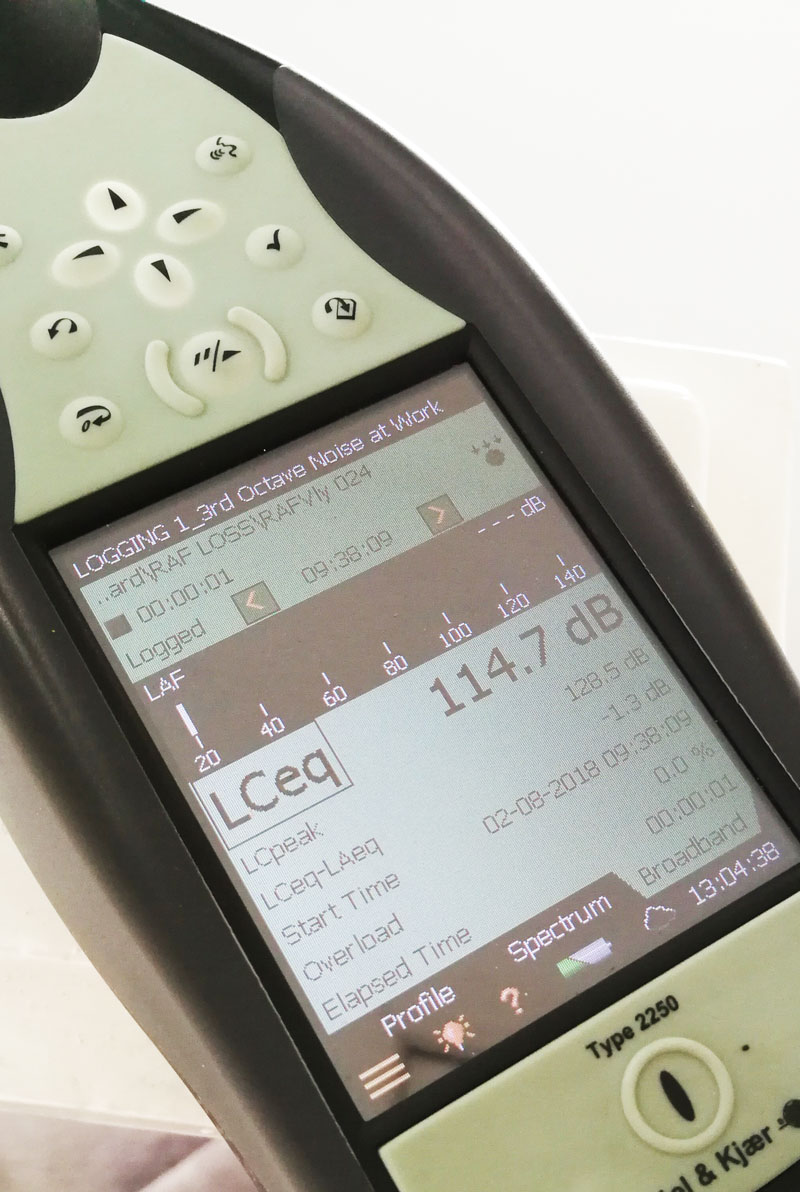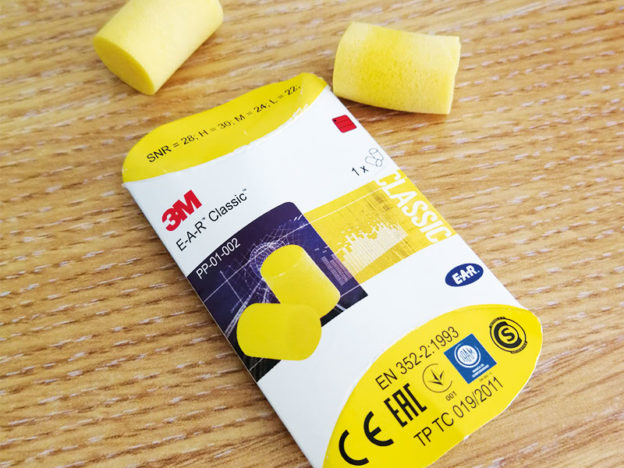Printed on the packaging of a CE approved hearing protector, you may have seen a quantity known as the Single Number Rating (SNR) denoted in decibels and wondered “what is it, and how is it of any use”?
The SNR is a single attenuation value which is quite often sufficient enough and can be manipulated easily to estimate the protection provided by a hearing protector against exposure to noise. It is a convenient figure to use particularly if your sound level meter (which must be an integrating one) does not have the facility to take octave band readings, but incorporates a ‘C’ weighting filter.

From the octave band attenuation performance of the hearing protector (derived from a test defined in a BS EN standard), the SNR performance can be calculated (by a method prescribed using a BS EN ISO standard) and be published by the manufacturer.
To predict the noise level at the ear of a person exposed to noise and who is wearing hearing protection, you must first determine through measurement the equivalent continuous ‘C’ weighted sound pressure level of the offending noise. The result is then processed as follows:
LAeq’ = LCeq – SNR
where LAeq’ = predicted equivalent continuous ‘A’ weighted sound pressure level (in dB) at the ear with the hearing protector in place (this quantity allows you to determine whether the hearing protector provides adequate protection).
LCeq = the equivalent continuous ‘C’ weighted sound pressure level of the offending noise field (in dB) as measured by your sound level meter.
and SNR = Single Number Rating of the hearing protector (manufacturer’s data) (in dB)
The Health and Safety Executive (HSE) recommend that a ‘Real World’ factor of +4dB should be added to the predicted result due to factors such as poor fitting, the wearing of spectacles and interference by other forms of personal protective equipment or headwear. As a result, the noise level at the ear is predicted to be 4dB higher than the computed result.
E.g. If LCeq is measured as 108 dB, and the SNR of the hearing protector is 30dB, then LAeq’ would equate to 78dB (i.e. 108dB – 30dB). To account for the ‘Real World’ factors explained in the above paragraph, the noise level at the ear would increase by 4dB to 82dBA.
The HSE also recommend that the hearing protector should reduce the noise level at the ear to below 85dBA. In the case of the above example, the hearing protector of SNR 30dB provides adequate protection at 82dBA.

Note: The LCeq measured quantity is different to an LCpeak one also seen on sound level meters and should not be confused with one another. The latter is a ‘C’ weighted absolute peak measurement where high peak levels may present a risk to hearing from a physical damage point of view. The selection of appropriate hearing protection against such damage uses a prediction method that is different to the one described in this posting.
Although the method used to arrive at the noise level prediction is most accurate when using the manufacturer’s octave band attenuation data of the hearing protector, using the SNR figure to predict the noise level at the ear when wearing a hearing protector gives a close enough approximation in most cases. The exception to this is when the offending noise is rich in high and low frequency tonality, and caution must therefore be exercised when this situation arises. Under such circumstances it would be advisable to use the octave band attenuation data for the prediction, along with an octave band analysis of the sound source.
Still need help with this? Then Essel Acoustics has the skills, experience and qualifications to carry out a noise risk assessment which will include recommending the appropriate hearing protection for staff working in your environment, to fulfil regulatory requirements.

